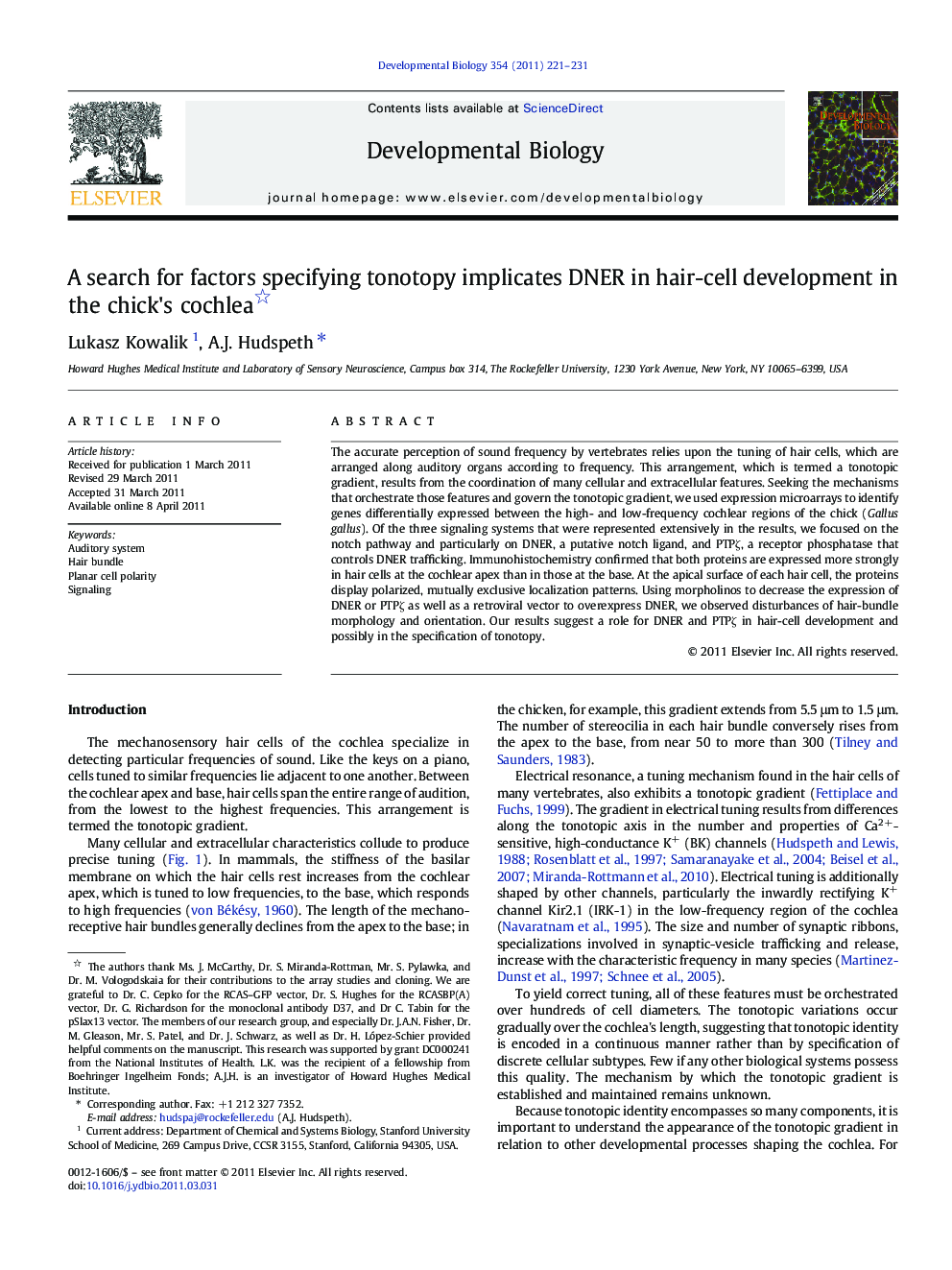| Article ID | Journal | Published Year | Pages | File Type |
|---|---|---|---|---|
| 2173727 | Developmental Biology | 2011 | 11 Pages |
The accurate perception of sound frequency by vertebrates relies upon the tuning of hair cells, which are arranged along auditory organs according to frequency. This arrangement, which is termed a tonotopic gradient, results from the coordination of many cellular and extracellular features. Seeking the mechanisms that orchestrate those features and govern the tonotopic gradient, we used expression microarrays to identify genes differentially expressed between the high- and low-frequency cochlear regions of the chick (Gallus gallus). Of the three signaling systems that were represented extensively in the results, we focused on the notch pathway and particularly on DNER, a putative notch ligand, and PTPζ, a receptor phosphatase that controls DNER trafficking. Immunohistochemistry confirmed that both proteins are expressed more strongly in hair cells at the cochlear apex than in those at the base. At the apical surface of each hair cell, the proteins display polarized, mutually exclusive localization patterns. Using morpholinos to decrease the expression of DNER or PTPζ as well as a retroviral vector to overexpress DNER, we observed disturbances of hair-bundle morphology and orientation. Our results suggest a role for DNER and PTPζ in hair-cell development and possibly in the specification of tonotopy.
Research highlights► Hair cells in the cochlea are arranged by frequency, forming the tonotopic gradient. ► We identified genes differentially expressed in high- and low-frequency regions. ► Three signaling pathways were represented in results, including the notch pathway. ► DNER, a notch ligand, and PTPζ, a receptor phosphatase, localize in a polarized way. ► Interference with DNER expression causes hair-bundle and orientation defects.
